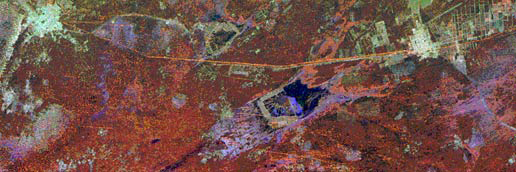For my attempt to fall down the “rabbit hole”, I started to look at myths about the Great Wall of China. I found one website that talked about 15 different myths about the Great Wall of China for tourists, and of course the myth about being able to see the Great Wall from space myth was mentioned. The fact of being able to see the Great Wall of China from space was actually myth-busted by NASA themselves because when numerous trips to space took place many astronauts said that not much of inside Earth is very visible. Alan Bean, one of the astronauts from the Apollo 12 mission stated, “all you can really make out on the Earth are lots of white clouds and snow, some blue patches, a little bit of yellow, and—every once in a while—a patch of green.” This quote, found on Ripley’s I Can’t Believe its Not Real! page explains NASA’s confirmation of no visible wall from space. It would have been pretty insane if the Great Wall was seen from space, but its beauty can still be admired from a world with gravity.

While reading this myth article, I also read about the legend that a dragon designed the course for the Great Wall for the builders of the wall, which the people building the wall then used to map out which direction the wall would go. Although this is false information, I started to wonder about the role dragons played in Chinese culture. According to the article titled, “Chinese Dragons: Why They’re So Important in Chinese Culture”, dragons are more than a lucky symbol and have actually bee embroidered into the fabric of Chinese history. It is a divine being, but there is not just one dragon that is important, there are actually nine different dragons that can be found throughout China’s architecture and art. Each dragon represents something different, so for example, one dragon represents water while the other represents music. Their names are Bixi, Quiniu, Yazi, Chaofeng, Pulao, Chiwen, Bi’an, Suanni, and Fuxi (do not ask me how to pronounce them). The type of energy and purpose of a place is denoted by a particular dragon. Each dragon also has different animal body parts and have different colors that are symbolic.

It was very interesting to try to fall down the rabbit hole because I learned something new about the Chinese culture outside of class especially something that explains more of the spiritual and power dragons hold in the Chinese culture. I am also a big fan of dragons so it was really cool to read about the impact those dragons play in Chinese art as well as overall in Chinese history.